
Bath Salts: Not What it Sounds Like ALSO » How a Simple Goal-Setting Exercise Can Change a Kid’s Life » Red Flags of Dating Abuse » The Value of a Well-Balanced NO March 2023 | youthconnectionscoalition.org BUILDING INDEPENDENCE Teaching Your Child When and How to Ask for Help BROUGHT TO YOU BY
Benefis Helena Imaging now has the most advanced technology in the state. With significantly faster scans that produce vastly improved images, our new MRI scanner can meet your imaging needs in a fraction of the time of a traditional MRI. The scanner’s wider opening also makes your experience less stressful. We are invested in bringing cutting-edge healthcare to the Helena community to offer you the best care possible.

Talk to your provider about getting your scans done at Benefis Helena Imaging. Your local imaging experts.
Learn more at Benefis.org/HelenaImaging
The latest technology still needs the right human touch.



youthconnectionscoalition.org | YC MAGAZINE | March 2023 1 PRODUCED IN CONJUNCTION WITH PARTNER AGENCY TO ADVERTISE OR CONTRIBUTE Coleen Smith: (406) 324-1032 coleen@youthconnectionscoalition.org COVER PHOTO BY Floating Leaf Studios BROUGHT TO YOU BY INSIDE MARCH 2023 2 From the Director 5 Confessions from the Kitchen Table 10 Faces in the Crowd 11 40 Developmental Assets 12 Assets in Action 18 Q&A / By the Numbers 6 Building Independence: Teaching Your Child When and How to Ask for Help 14 How a Simple Goal-Setting Exercise Can Change a Kid’s Life 16 Red Flags of Dating Abuse 20 The Value of a Well-Balanced NO 23 Bath Salts: Not What It Sounds Like FEATURES IN EVERY ISSUE
Kortney McKay is an 8th grader at Helena Middle School. She enjoys being involved in student council and youth group, and she is a WEB leader and mentor for younger students at HMS. Kortney has grown up in the Helena Valley with her four older siblings. She enjoys being involved in soccer, basketball, softball, and running. Kortney is an active 4-H member, and she also enjoys hiking, camping, fishing, kayaking, traveling with her family, and spending time with her friends. Kortney is an honor roll student who loves her science and math classes. Kortney truly enjoys helping fellow students. She hopes to one day become a teacher herself.
ON THE COVER ABOUT YOUTH CONNECTIONS
Youth Connections is a coalition of over 1100 community members representing parents, educators, churches, youthserving organizations, businesses, and more who want to make Helena a healthy and supportive place for kids and families. Youth Connections recognizes the need to reduce negative behaviors including substance use and violence while also working to increase positive opportunities and mental wellness for all our local kids.
So how do we do that? We know there is no silver bullet to making communities great, and so we do LOTS of things that we know make communities better. We support agencies and businesses who offer youth activities because we know kids who are involved in positive activities aren’t involved in negative ones. We support student mentoring relationships because research shows it helps kids stay in school and be successful. We also know that when kids know better, they do better, so we support classroom education in the areas of bullying prevention and substance use prevention. Youth Connections also understands we must support the adults in kids’ lives and therefore we provide training, education, networks, and collaborative opportunities for parents and professionals to connect with others who care about kids.
Youth Connections is well known for its quarterly publication, YC Magazine, a resource for parents and the entire community. These are just some of the projects we’re working on to serve our mission of engaging our community to create environments where youth thrive and succeed. For a comprehensive list of activities, services, and ways you can get involved, please visit our website at www.youthconnectionscoalition.org.
Holy cow, where has the school year gone? We’re heading into the final turn and kids are starting to see the finish line… summer break. How do we keep our kids focused and committed to completing the year on a high note? Those were thoughts the magazine committee pondered when coming up with the slate of articles for this issue.
We are so thankful for Dr. Len Lantz allowing us to reprint his incredibly helpful articles. While teaching kids how to ask for help is important year-round, it’s especially helpful when they’re feeling the time crunch of the end of the year. We are also very appreciative of the partnership with Natural High. Their article in this issue has tools for helping students set goals. Again, this is an important skill but possibly more so as minds start to wander, thinking about summer fun.
Spring is the time for proms and potentially increased dating, especially during the summer months. The magazine committee felt it was important to address teen dating violence. It’s a real concern, and we’ve addressed red flags for parents to look for in their children’s relationships.
A friend of one of the committee members mentioned their child was approached at the mall by teens offering salts. These drugs can be very dangerous, and parents often don’t know what it is or what to look for as far as signs of use. They are also fairly easy for kids to get, and small enough to hide in a multitude of ways.
Our last article addresses how to maneuver saying no to our kids. Often if feels like we’re being the worst parents ever by not giving them everything they want, but in reality it’s probably just what they need. It’s important for them, and us, to understand that just because we say no, it doesn’t mean we don’t love them. In fact it’s probably just the opposite.
Lastly, if a lavish vacation is not in the cards, Emily has some great options for a fun StayCation.

We hope this spring is happy, healthy, and goal-oriented!
CAN’T GET ENOUGH GREAT RESOURCES? FOLLOW US: Twitter: @Youthconx
Facebook (for parents): Youth Connections

Facebook (for kids): Find Your Spot
Instagram: @Youthconx
COLEEN SMITH, YC DIRECTOR Phone: (406) 324-1032
COLEEN SMITH
Director FROM THE
coleen@youthconnectionscoalition.org
2 March 2023 | YC MAGAZINE | youthconnectionscoalition.org



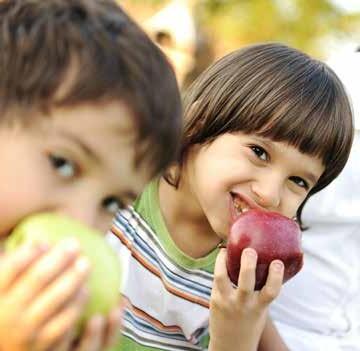


youthconnectionscoalition.org | YC MAGAZINE | March 2023 3
Saves Lives Learn how to create a safer community for your family by going to SaferCommunitiesMT.org or by scanning the QR code above Suicide is preventable, overdoses are too. Help build the new Community Food Resource Center and Create a Hunger-free Community! Give or learn more at HelenaFoodShare.org Often unseen, hunger is real for many of our neighbors including 1 in 5 kids in our community Development. Guidance. MENTORSHIP bigcentral.org · (406) 442-7479 · 560 N Park Ave Suite 126, Helena, MT 59601 Give the gift of mentorship by enrolling your child as a Little with Big Brothers Big Sisters of Central MT
Safe Storage
STORYTIME IN THE PARKS returns for summer 2023!
Join
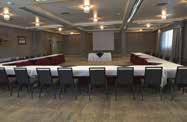



Helena, Augusta, and Lincoln too
Enjoy 30 minutes of stories, songs, rhymes, and more. Library services will be offered at the Lewis & Clark Library Bookmobile after the storytime program. These programs are geared towards children between the ages of 3 to 8 years old but everyone is welcome. Cancellations due to weather will be posted by 9:30 am the day of the event on the library website, www.lclibrary.org, and social media accounts
@LewisandClarkLibraryHelena and @LCLBookmobile. Don’t forget your sunscreen and a blanket to sit on!

Thursday, June 15th | 10 am

Cherry Hill Park, Helena
Thursday, June 22nd | 10 am
Cherry Hill Park, Helena
Monday, June 26th | 11 am
Outside at the baseball field Broadway St, Augusta
Thursday, June 29th | 10 am
Skelton Park, Helena
Thursday, July 6th | 10 am
Skelton Park, Helena
Thursday, July 13th | 10 am
Skelton Park, Helena
Monday, July 17th | 10:30 am

Main Street Park, East Helena
Thursday, July 20th | 10 am
Lockey Park, Helena
Monday, July 24th | 11 am
Outside at the Lincoln Library Lincoln
Thursday, July 27th | 10 am Lockey Park, Helena


4 March 2023 | YC MAGAZINE | youthconnectionscoalition.org
the Lewis & Clark Library at a different Helena City park every Thursday at 10 am for
storytime in the Helena City parks this program is traveling to East
storytime. In addition to
In Downtown Helena a contemporary hotel along the historic walking mall (406) 443-2200 22 N Last Chance Gulch, Helena, MT 59601
CONFESSIONS FROM THE KITCHEN TABLE
How to Plan a Great Staycation
Imagine your dream vacation: a stunning setting, fantastic food, ample adventures, while surrounded by the people you love. What if you could create this dream at home instead of traveling afar? Skip the stress and cost of driving and flying long distances. Instead, relax and enjoy a staycation of your dreams close to home.
Here are nine simple steps to make it happen.
1. PREP FOR YOUR “TRIP”: Put as much effort into planning your staycation as you would a destination vacation. Prepare your home ahead of time so that it is as pleasant as possible and up to the standards of a vacation rental. Take out the garbage, change the sheets, pick up clutter, and clean the kitchen and the bathrooms. This way you are sure to enjoy your stay at home even more. Ensure all your clothes are clean so you can pack and wear your favorites. Everyone likes to look and feel their best on vacation. For meals that will be eaten at home, shop and prepare in advance, so that you can relax during your staycation. Think ahead about activities and plan your itinerary by visiting the local chamber of commerce or by borrowing a travel book from the library about your area.
2. BE INTENTIONAL ABOUT VACATION MODE: Since you are technically still at home, it is easy to get sucked back into your daily chores, projects, and responsibilities. But resist! Stay in the moment, give yourself permission to unwind, and remind yourself that you are on vacation.
3. PLAY THE TOURIST: If you had an out-of-town visitor, where would you take them? What does your town have to offer, and when was the last time you visited those tourist attractions? Maybe those places deserve to be revisited. Chances are that your town or city even has attractions you have not yet visited. Look for a play, concert, exhibit, or show that is happening during your staycation and add that to your itinerary, too.
4. PAMPER YOURSELF: Add an extra layer of relaxation to your vacation by scheduling a massage, getting a mani/pedi, taking a yoga
class, or visiting a hot spring. Curl up with your favorite book and a cup of tea next to a roaring fire. Or catch the latest episode of Yellowstone Whatever floats your boat.
5. BE A FOODIE: Take a break from shopping, prepping, and cooking, just like you would on a dream vacation. Either get these things done ahead of time, or make arrangements to get takeout. Treat yourself to things you might not normally have at home, like tropical fruits or a charcuterie board, and plan lots of meals out to eat. And it is a vacation, so don’t skip dessert!
6. STAY LOCAL: Look into renting a hotel room for a night or two and take advantage of the hotel pool. Another great option is renting an in-town AirBNB to escape your house but not your hometown. Maybe a friend or family member is up for a house swap?
7. SLEEP: Turn off the alarm clock, close the shades, and get some much-needed sleep. Coach the kids on what they can do when parents are sleeping (read books, play a quiet game), and make nap time sacred and mandatory.
8. BE ADVENTUROUS: Destination locations are not the only places to offer activities and outings. Look for adventures that pique your interest such as horseback riding, ziplining, and whitewater rafting in your area. In the winter months, look for ice skating, snowmobiling, skiing, sledding, and snowshoeing.
9. CAMPOUT: If you love the outdoors, a campout in the backyard can be a fun and affordable vacation alternative. Even a tent in the living room can be great fun that will create family memories for years to come. Or check out a local campground where you can build a campfire, roast smores, and gaze at the stars.
Near or far, the most important element of any family vacation is being together and present and creating lasting memories. ■
YOU CAN SUBMIT YOUR STORY AT: coleen@youthconnectionscoalition.org
For many of us the kitchen table represents the typical family experience. We have laughed while having family game night. We have cried over our children’s choices. We have blown out the candles on many cakes. We have argued our way out of doing the dishes. We have struggled through those “three more bites.” We have learned hard lessons and celebrated many deserved successes. One thing is for sure though—if our kitchen tables could talk, there would be plenty of stories! So often it is in relating to others’ stories that we realize there isn’t always one answer, or even a right answer. Parenting is hard work! If you have a story of lessons learned, we invite you to share it with our readers. Sometimes, knowing we aren’t the only ones struggling to find the answer is all the help we need.
youthconnectionscoalition.org | YC MAGAZINE | March 2023 5
Teaching Your Child When and INDEPENDENCE: building

How to Ask for Help INDEPENDENCE:
By LEN LANTZ, M.D.
It seems wrong until you think it through: To become independent, you must become good at getting help.
This statement doesn’t seem true to many people until they mull it over long enough, but I promise you that learning to request and receive help is an essential ingredient to the self-sufficiency that I’m referring to as independence.
I’m not talking about extremes, such as living the life of a mountain man in a cabin without electricity or subsisting as a survivalist with a bunker stocked with weapons and canned food. From my perspective, independence involves:
+ Level-headedness and self-control
+ Resilience
+ Problem-solving skills and creativity
+ Personal responsibility
+ Effectiveness and success
+ Practicality
+ A broad knowledge base with an understanding of systems
+ Knowing when and how to ask for help
Just labeling yourself an independent person does not make it so. Independent people have developed many skills and characteristics that helped them to become and remain independent. Asking for and receiving help is a critical strategy that helped them get there. Learning how to effectively get help from others is a critical skill for kids to learn.
GAINING INDEPENDENCE IS A PART OF DEVELOPMENT
What are the basics of raising a child? You know, the bare minimum. If you had to list only five things, what would they be? Here are some things that crossed my mind:

1. Feed and clothe your child.
2. Don’t beat or berate them.
3. Make sure they brush their teeth and go to school.
4. Let them know they are loved.
5. Have some fun together.
It’s interesting though that doing those basic things for kids won’t really get them ready to enter the world as an adult. Also, it’s not clear that our school systems will teach kids basic living skills. Kids can go to school and never learn how to:
+ Budget or balance their checking account
+ Set boundaries with unhealthy people
+ Present themselves well in a job interview
+ Save and invest money for retirement
Even adults struggle to develop these life skills. People can benefit from books, the internet, and online videos to gain these skills, but often they need more specific help
YC MAGAZINE | March 2023 7 continued on page 9
Prickly Pear Land Trust ’s iconic Don’t Fence Me In Trail Run has something for everyone, whether pushing through the 30K dash, scrambling through hills and trees with the 5K or 12K races, or taking time to sniff the wild roses in the non- competitive 5K Dog Walk.

All are invited to celebrate our local wild lands. Stick around afterward for a party in the park with food, live music, and family-friendly fun

unds raised from this race support the outh Hills Trail system and open lands! ’ s all about coming together, celebrating e outdoors and running wild Kids under 3 run for free!

Register now for the 30K , 12K , 5K races or the 5k dog walk pricklypearlt org




8 March 2023 | YC MAGAZINE | youthconnectionscoalition.org
Top Gun Auto Body, we pride ourselves on providing friendly and fast service to our clients, with years of expertise and multiple certifications to back up all of our work.
know how stressful this process can sometimes be, so let us take some weight o your shoulders by helping you through every step - making the entire process as pain-free and streamlined
you
Google Reviews!
- Friday
7:30am - 5:30pm Collision/Restoration Services (406) 227-3390 or (406) 461-3054 Recovery Services - (406) 422-8286
York Road | Helena MT 59602 @TopGunAutoBody TopGunAutoBody.com runsignup.com/Race/Info/MT/Helena/D O N T F E N C E M E I N T R A I L R U N
At
We
as possible! We encourage
to research our
Monday
|
2809
continued from page 7 from another person to move beyond the basics. But before you ask for help, you might want to consider a few factors that can affect the experience.
DEVELOPING A GROWTH MINDSET
In building independence, I believe people need to adopt a growth mindset. It is incredibly hard to change behavior if you don’t believe that you can. A growth mindset is about adopting attitudes and beliefs about yourself and others that foster helpseeking behavior. It involves convincing yourself that you can become smarter and better at things even if you aren’t right now. The growth mindset fosters a don’t-quit approach to failures and setbacks in life. It means learning from mistakes, revising your plan, and trying again. Working on your own growth mindset is something that you can model for your kids.
We can help our kids to feel empowered to try, fail, and try again. We do not stop growing and learning, no matter how old we are. There is nearly always someone out there—somewhere—who can help. And we can get help from others in the areas where we are struggling. The book Mindset does an excellent job of providing examples of adopting a growth mindset.
ATTITUDES THAT HOLD KIDS BACK
Some kids really struggle in adopting a growth mindset and find that challenges, setbacks, and failures stop them in their tracks. There are several reasons why kids are unwilling or afraid to try, but most of them stem from avoidance. Common thoughts and attitudes that drive avoidance and interfere with help-seeking and adopting a growth mindset are:
+ I’ll look like a fool.
Counter-thought: “Smart kids know when to ask for help.”
+ People will make fun of me.
Counter-thought: “Most of the time people are not laughed at for asking for help.”
+ I should know this. I’m supposed to know this.
Counter-thought: “Even if I’m supposed to know this, I sometimes forget. I can decide to remember it forever once I re-learn what I need to know.”
+ I need to be the best.
Counter-thought: “The people who are the best at things have learned from their mistakes and disappointments.”
+ I don’t want to feel stupid.
Counter-thought: “I would rather feel embarrassed by asking for help than feel helpless and frustrated by avoiding help.”
+ I don’t want others to see how stupid and incapable I am.
Counter-thought: “I admire people who know how to ask for help and achieve success because of it.”
+ I feel too anxious to ask for help.
Counter-thought: “I’d rather feel anxious in asking for help than feel anxious about giving up on my dreams and goals for myself.”
Did you see yourself in any of the negative thoughts and attitudes above? What we tell ourselves in our heads matters tremendously. When we can change our inner dialogue and become more balanced and understanding of ourselves, we will be happier, less anxious, and more likely to ask for help when we need it. For more information on dealing with negative, self-critical thoughts, please read my article, “Mindfulness – How to Chill Out and Stop Beating Yourself Up” (https://psychiatryresource.com/articles/ mindfulness).
MODEL HELP-SEEKING AT HOME
Modeling a help-seeking attitude and growth mindset begins at home. Do a quick self-check. How do I model a growth mindset and help-seeking attitude for my kids when I am struggling and need help? How do I communicate to my kids that I’m there to help them without undermining them or fostering dependency? If you are helping your child with their homework and don’t know the answer, how do you go about getting the answer if you can’t figure it out with available resources?
So, how can you help kids without doing things for them or making them feel stupid? One way is to figure out what level of support they might need from you. There are many different roles that you can take when helping kids figure out problems:
+ Planner – “If that doesn’t work, what is your backup plan?”
+ Technical Support – “Call me if you have a question.”
+ Helper – “I’ll run the mixer and put the cake pans in the oven.”
+ Inspector – “Okay, kids. Before you ride your bikes off the jump you’re building, come get me to check things out.”
+ Supervisor – “I’ll be in the shade over there to keep track of your progress.”
+ Fan – “Come get me when you’re done. I want to see what you’ve made.”
+ Transportation – “If you guys get tired out or if something isn’t going right, call me and I’ll come to get you.”
The other way to help kids is to avoid
some basic mistakes. When kids ask for help, don’t blame them, mock them, or do something for them without them watching you and learning how to do it themselves in the future. It’s also helpful to think about helping your children as a process, not a one-time event. Kids remember these experiences and it improves their confidence. The more areas where they feel confident and gain “adult” skills the more they will be encouraged to try more things and not be afraid to ask for help when they need it. They might also try a little harder before asking for help because it’s comforting to know that help is there when you need it.
EXPANDING THE FIELD
Expanding the field means adding more people (or helpers) to a problem that needs to be solved. Even experts need help. I have to connect with other medical and mental health specialists several times each week in my role as a physician, even though I’m already a specialist in psychiatry.
So how can we encourage kids to reach out for help and expand the field in their lives when they need it? It can feel especially hard when kids seem to only be willing to ask for and receive help from their parents. Probably the best place to start is supporting kids to ask for help in their current school classrooms. Once kids master asking for help from their teacher, they can expand to other areas of their lives like coaches, music teachers, etc. Helping your child to reach out to teachers right away and ask for help appropriately is critical. We want our kids to say, “Please show me how to do this math problem so I can do the others,” not “Just tell me the answer.”
You can also practice role-playing with your child in interacting with teachers and other adults, and if your child finds that a particular person is not helpful, then you can start brainstorming together on who to reach out to next to help them get the help they need.
YOU CAN HELP YOUR CHILD DEVELOP SELF-SUFFICIENCY BY ENCOURAGING HELP-SEEKING
Imagine your child as a confident, grounded, and independent young adult. How did they get there? Kids who have learned to ask for and receive help have greater resilience, healthier relationships, and greater success in their education and later careers. They have a sense of competence that builds confidence and they don’t feel awkward about reaching out for help when they have reached the limits of their knowledge, education, and available resources. You can be the person who helps your child get on the path to becoming an independent adult by modeling and encouraging them in appropriate help-seeking behavior. ■
youthconnectionscoalition.org | YC MAGAZINE | March 2023 9
Check out who’s standing out in our community.
IS THERE SOMEONE YOU’D LIKE TO NOMINATE?
Please email coleen@youthconnectionscoalition.org and tell us why this individual has stood out in your crowd.
Carson Burright JIM DARCY ELEMENTARY, 5TH GRADE

He is one of many standout students at Jim Darcy Elementary. Carson is always eager to lend a helping hand to teachers and his peers even if that means staying after school. Carson works diligently to stay organized and on task, completing his work thoroughly and on time. Carson is a loyal Boy Scout and a strong leader. His kindness and bright smile are contagious and bring joy to all around him. We are thankful to call him a Mighty Mustang! Be Safe, Be Respectful and Try Your Best! Thanks, Carson, for being such a great role model to fellow students and to everyone around you.
Kate Poole HELENA MIDDLE SCHOOL, 7TH GRADE
Kate Poole is a 7th grader at HMS and is very active in her school and Helena communities. Kate is helpful in all contexts, but she is especially helpful in the HMS library. She will slip unobtrusively into the library throughout the day and help out the librarians in any and all ways. She helps her peers select books, she mans the circulation desk when the librarians are busy, she puts books away, she straightens shelves, helps clean up MakerSpace, and makes fantastic bookmarks that she gives out to our students. Kate is a wonderful asset to her Helena and HMS communities, and we are lucky to have her as a student.

Aidan Wosoba EAST HELENA HIGH SCHOOL, SENIOR

Aidan is one of the kindest, most motivated, and hard-working students at our school. Throughout his time here, Aidan has always been one to take the extra step, be involved with a club or activity, or try something new to better himself. More importantly, Aidan is always one to be there for students in need and to provide support for those around him to help them be the best version of themselves. With this, Aidan has been an integral person in creating our Vigilante Link Crew, piloting our Student Aide Program where he works with our elementary students twice a week to help them grow and flourish, and is truly an all-around great human being who is making our world a better place.
Lona Carter HELENA PUBLIC SCHOOLS

Lona, most recently the principal at Jefferson Elementary, is now leading the district’s effort to collaborate with community mental health providers to develop a sustainable model for K-12 school-based services. She is working to create a variety of community partnerships which will eliminate barriers for HSD students and families to have access to high quality mental health services. She said, “Access to appropriate mental health services is a critical need in our community.” Lona first joined Helena Public Schools in 1988 and has served as a teacher, social-service coordinator, and administrator at the elementary, middle, and high school levels. We are thrilled to highlight the district’s focus and Lona’s commitment to student mental health. Thank you, Lona!
Allegra Marketing Print COMMUNITY PARTNER
We would like to highlight one of our community partners, Allegra. Kyle and his staff have always been committed to the youth in Helena. They are a current major partner, helping with the ad sales and printing of this publication. They hire part-time high school students when possible; donate paper stock annually to elementary schools and middle schools in Helena; sponsor the Boy Scouts of America—Prickly Pear District, Capital High and Helena High booster clubs, and YMCA youth athletics. They also sponsor many local nonprofits and their events like the Friendship Center, Intermountain, and Helena Food Share. Helena is lucky to have businesses such as Allegra supporting local youth and families.
10 March 2023 | YC MAGAZINE | youthconnectionscoalition.org
savor it all
40 DEVELOPMENTAL ASSETS

40 Developmental Assets are essential qualities of life that help young people thrive, do well in school, and avoid risky behavior.
Youth Connections utilizes the 40 Developmental Assets Framework to guide the work we do in promoting positive youth development. The 40 Assets model was developed by the Minneapolis-based Search Institute based on extensive research. Just as we are coached to diversify our financial assets so that all our eggs are not in one basket, the strength that the 40 Assets model can build in our youth comes through diversity. In a nutshell, the more of the 40 Assets youth possess, the more likely they are to exhibit positive behaviors and attitudes (such as good health and school success) and the less likely they are to exhibit risky behaviors (such as drug use and promiscuity). It’s that simple: if we want to empower and protect our children, building the 40 Assets in our youth is a great way to start.
Look over the list of Assets on the following page and think about what Assets may be lacking in our community and what Assets you can help build in our young people. Do what you can do with the knowledge that even through helping build one asset in one child, you are increasing the chances that child will grow up safe and successful. Through our combined efforts, we will continue to be a place where Great Kids Make Great Communities.
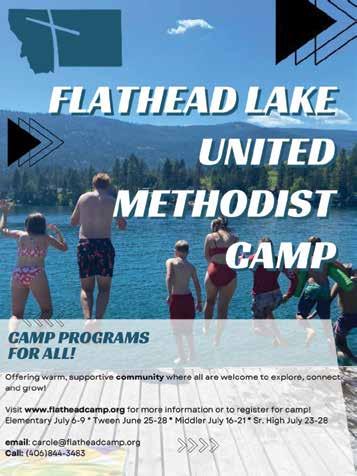
youthconnectionscoalition.org | YC MAGAZINE | March 2023 11
the page to learn more! The 40 Developmental Assets® may be reproduced for educational, noncommercial uses only. Copyright © 1997 Search Institute®, 615 First Avenue NE, Suite 125, Minneapolis, MN 55413; 800-888-7828; www.search-institute.org. All rights reserved.
Turn
assets in action
40 DEVELOPMENTAL ASSETS
SUPPORT
1. Family support: Family life provides high levels of love and support.
2. Positive family communication: Young person and her or his parent(s) communicate positively, and young person is willing to seek advice and counsel from parent(s).
3. Other adult relationships: Young person receives support from three or more nonparent adults.
4. Caring neighborhood: Young person experiences caring neighbors.
5. Caring school climate: School provides a caring, encouraging environment.
6. Parent involvement in school: Parent(s) are actively involved in helping young person succeed in school.
EMPOWERMENT
7. Community values youth: Young person perceives that adults in the community value youth.
8. Youth as resources: Young people are given useful roles in the community.
9. Service to others: Young person serves in the community one hour or more per week.
10. Safety: Young person feels safe at home, at school, and in the neighborhood.
BOUNDARIES & EXPECTATIONS
11. Family boundaries: Family has clear rules and consequences and monitors the young person’s whereabouts.
12. School boundaries: School provides clear rules and consequences.
13. Neighborhood boundaries: Neighbors take responsibility for monitoring young people’s behavior.
14. Adult role models: Parent(s) and other adults model positive, responsible behavior.
15. Positive peer influence: Young person’s best friends model responsible behavior.
16. High expectations: Both parent(s) and teachers encourage the young person to do well.
CONSTRUCTIVE USE OF TIME
17. Creative activities: Young person spends three or more hours per week in lessons or practice in music, theater, or other arts.
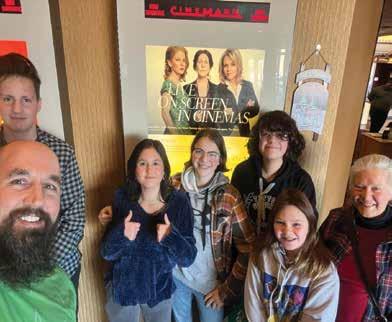

18. Youth programs: Young person spends three or more hours per week in sports, clubs, or organizations at school and/or in the community.

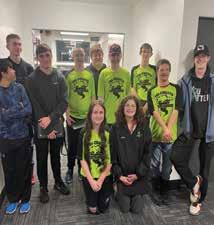
19. Religious community: Young person spends one or more hours per week in activities in a religious institution.
20. Time at home: Young person is out with friends “with nothing special to do” two or fewer nights per week.
12 March 2023 | YC MAGAZINE | youthconnectionscoalition.org 9 18 3
CR Anderson students attend opera at the movie theatre
15
Gymnasts at a recent meet
Volunteers at Intermountain’s Festival of Trees
Special Olympics state basketball winners at school board meeting
If you or your child would like to submit a picture that represents one of the 40 Developmental Assets, please email coleen@youthconnectionscoalition.org with a picture and the number of the asset the picture represents.
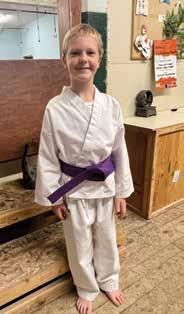
Not all pictures are guaranteed publication.
COMMITMENT TO LEARNING
21. Achievement motivation: Young person is motivated to do well in school.
22. School engagement: Young person is actively engaged in learning.

23. Homework: Young person reports doing at least one hour of homework every school day.
24. Bonding to school: Young person cares about her or his school.
25. Reading for pleasure: Young person reads for pleasure three or more hours per week.
POSITIVE VALUES
26. Caring: Young person places high value on helping other people.
27. Equality and social justice: Young person places high value on promoting equality and reducing hunger and poverty.
28. Integrity: Young person acts on convictions and stands up for her or his beliefs.
29. Honesty: Young person “tells the truth even when it is not easy.”
30. Responsibility: Young person accepts and takes personal responsibility.
31. Restraint: Young person believes it is important not to be sexually active or to use alcohol or other drugs.
SOCIAL COMPETENCIES
32. Planning and decision making: Young person knows how to plan ahead and make choices.
33. Interpersonal competence: Young person has empathy, sensitivity, and friendship skills.
34. Cultural competence: Young person has knowledge of and comfort with people of different cultural/racial/ethnic backgrounds.

35. Resistance skills: Young person can resist negative peer pressure and dangerous situations.
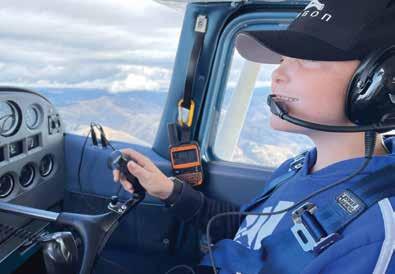
36. Peaceful conflict resolution: Young person seeks to resolve conflict nonviolently.
POSITIVE IDENTITY
37. Personal power: Young person feels he or she has control over “things that happen to me.”
38. Self-esteem: Young person reports having a high self-esteem.
39. Sense of purpose: Young person reports that “my life has a purpose.”
40. Positive view of personal future: Young person is optimistic about her or his personal future.
youthconnectionscoalition.org | YC MAGAZINE | March 2023 13
33 21 30 40
Edge Marketing+Design at CHS career day
HMS Library Council preparing books to share with peers
Flying lessons are a reward for hard work at school
Athlete is proud of his commitment to karate, earning his purple belt

HOW A SIMPLE GOAL-SETTING EXERCISE
can change a kid’s life
By NATURAL HIGH STAFF
Whether it’s about learning geometry to get a good grade, finding a job, or making a new group of friends, the pursuit of a meaningful goal can bring light, life, and organization to a kid’s life.
One of the worst things to see is a kid who’s disconnected and disengaged from growing, the ones who show little interest in caring or trying. Kids in that state fall into an at-risk category and deserve our attention and care.
For those kids who do identify goals and ambitions, there’s actually more support and guidance that we can provide them, which will in turn strengthen their foundation for a thriving future.
On one hand, you might have a kid who focuses solely on the benefits of achieving their goal. They imagine what it will feel like, and what they’ll be able to do once they get it. That leads to fantasy and a set-up for disappointment.
On the other hand is a kid who gets overwhelmed by the uphill battle they’ll need to push through and all of the various obstacles that are going to impede their progress. That turns into dejection and avoidance.
Both of those approaches will be a realistic barrier to a kid’s willingness and ability to meaningfully pursue their goal.
The third path is the way of mental contrasting, a relatively straightforward and simple exercise with powerful effects. It’s where an equal amount of attention and reflection is spent on goal attainment and goal obstacles. In the balance of both emerges a realistic path forward combined with the motivation to keep going.
Mental contrasting exercises ask kids to conceptualize all aspects of a dream, goal, or ambition they have, and also think through the inherent obstacles they’ll face as they try to achieve it.
The process of mental contrasting is a mature skill to develop over time. You can
certainly teach kids how to do it by walking them through a goal-setting exercise in a formal context. Here is a document that walks through the steps on how to make plans to reach their goal: naturalhigh.org/ wp-content/uploads/2019/07/LandingYour-Trick.pdf
It can also be taught and reinforced through natural discussions about their goals and ambitions. By asking questions on both sides of the equation, you can lead them to process the full reality of their desires.
As you watch them move forward, pay attention to how they move from one side or the other, either overwhelmed by the obstacles or caught up in the fantasy of a dream unfulfilled. Acknowledge what you notice and invite them to think aloud about the other side.
Here’s how it works:
STEP ONE: Ask them to think of one or two goals or accomplishments in different areas of their life, for instance, academics, sports, friendships, or college prep.
STEP TWO: After they’ve made a list, ask them to select the goal that feels most important to them.
STEP THREE: Direct them to write down what they will feel like, what they will say to others, and the new reality that they’ll experience after they accomplish their goal.
STEP FOUR: Have them share their goal and their future feelings about accomplishing that goal with a partner or small group
STEP FIVE: Now, looking at their goal, have them write down the obstacles, barriers, and roadblocks they might face as they move forward. Ask them to consider what it will cost them in terms of time, energy, and focus, and write those things down.
STEP SIX: Putting it all together, invite them to take turns in pairs or small groups, first sharing their goal, why it’s important to them, then the barriers they’ll face along the way. The final piece would be for them to share how they will feel once they accomplish their goal, despite the challenges and barriers.
When a kid has meaningful, interesting goals to focus on, whether those goals are about academics, sports, or something else, and also has the capacity to pursue them, they are protected against distractions and choices that could be harmful to their health and future. Kids who practice mental contrasting increase their self-regulation skills and are much less likely to engage in
youthconnectionscoalition.org | YC MAGAZINE | March 2023 15
risky behaviors. ■
This article was reprinted with permission.
When a kid has meaningful, interesting goals to focus on, whether those goals are about academics, sports, or something else, and also has the capacity to pursue them, they are protected against distractions and choices that could be harmful to their health and future.
Natural High is a
youth drug prevention and life skills program that provides easy, effective, and fun resources for educators, mentors, and parents to deliver protective measures in a relevant way through storytelling. The Storyteller library contains a roster of 40+ Natural High Storytellers — athletes, artists, musicians, designers — people who kids admire and trust. Their flexible curriculum offers videos, discussion questions, and activities. It can be used to meet a variety of needs, from brief 10-15-minute discussions to project-based work that takes place across multiple days or class periods.
DATING ABUSE red flags of
By BARBARA BESSETTE, Domestic Violence Preventionist
Dating abuse can often be thought of as an adult problem, but that is not always the case. According to the CDC one in 12 U.S. high school students experience physical dating abuse. That number also holds true for high school students who have experienced sexual dating abuse. We often want to blame the person in the relationship who is being abused. How many times have you heard someone say, “Why doesn’t she (or he) leave him (or her)?” or “If I were in that situation I would never stay with someone who treats me like that.”? The problem is not the person being abused, but the abuser themselves. If you talk to anyone who has ever been in an abusive relationship, they will tell you that the relationship did not start out this way. The abuser was everything this person had wanted. They were romantic or attentive to their partner’s needs. This is all part of the “Cycle of Abuse,” the Honeymoon period, then the tension builds followed by explosion and then onto the Honeymoon period again. By the time the abused person knows what is going on, they are stuck in this cycle and it is hard to escape.
So, what do parents need to know and what should they look for?
Prevention is a key component in helping to decrease teen dating abuse and you can never start too early. Talk with your preteens about healthy boundaries and how to maintain healthy relationships. The CDC has developed resources to help communities focus on prevention efforts. Check out Dating Matters on the CDC.gov website. It includes multiple prevention components for 11–14 year olds. There are multiple strategies that help prevent intimate partner violence and teen dating abuse which include engaging men and
boys as allies and bystander empowerment and education. We often overlook how communities can help to reduce teen dating abuse. Check out the CDC’s Preventing Intimate Partner Violence Across the Lifespan: A Technical Package of Programs, Policies and Practices
As your teens start dating make sure you are keeping open communication with them, you want them to know that you are always there for them no matter what. Talk to your teen about what a healthy relationship looks like. Here are some green flags (signs that a relationship is healthy):
+ The relationship is not moving too fast
+ The partner respects the girl/ boyfriend’s decisions
+ The partner is not jealous or possessive
+ They both have their own lives
As a parent you need to also talk to your kids about red flags (warning signs) of relationships:
+ Extreme jealousy
+ Moving too quickly into a relationship
+ Isolation from family and friends
+ Telling someone what they can and cannot do
This is not an exhaustive list, but a good starting point for a conversation about the difference between healthy and unhealthy relationships.
As a parent, pay attention to signs of dating abuse:
+ Has your teen become withdrawn from their usual activities?
+ Has your teen become depressed?
+ Does your teen have unexplained bruises or marks?
If you see signs of abuse, what should you do next? First and foremost, talk with your teen. Make sure that you are open and honest with your concerns, but do not be critical. This can cause them to withdraw and not want to talk with you. Make sure they understand that you do not blame them for the abuse happening. Tell them that you understand it is the abuser’s fault.
Teens are at a point in their lives where they may not want to talk to you or feel like you will make them break up with their partner. Encourage your child to turn to a teacher, a mentor, a clergy leader, or another trusted adult if they need someone else to talk to.
The most important thing that a parent can have is knowledge when dealing with teen dating abuse. Often, we think of physical abuse when we think about dating abuse. But that is not the only kind of abuse. There is also:
+ Sexual abuse: behavior that coerces someone to do something sexually that they don’t want*
+ Emotional/verbal abuse: nonphysical behaviors such as threats, insults, isolation and humiliation*
+ Financial abuse: limit access to finances, using financial circumstances to control
+ Digital abuse: using technology to harass, stalk, or intimidate*
+ Stalking: someone watches, follows, or harasses repeatedly* ■
16 March 2023 | YC MAGAZINE | youthconnectionscoalition.org
*For more information and expanded definitions,
LOVEISRESPECT.ORG When you understand these different forms, abuse can be easier to spot. There are many resources that are available online from the National Domestic Violence Hotline. Teens and parents anywhere in the country can call 866.331.9474 for help. You or your teen can also text “START” to 88788. Together we can keep teens safe from abuse.
visit
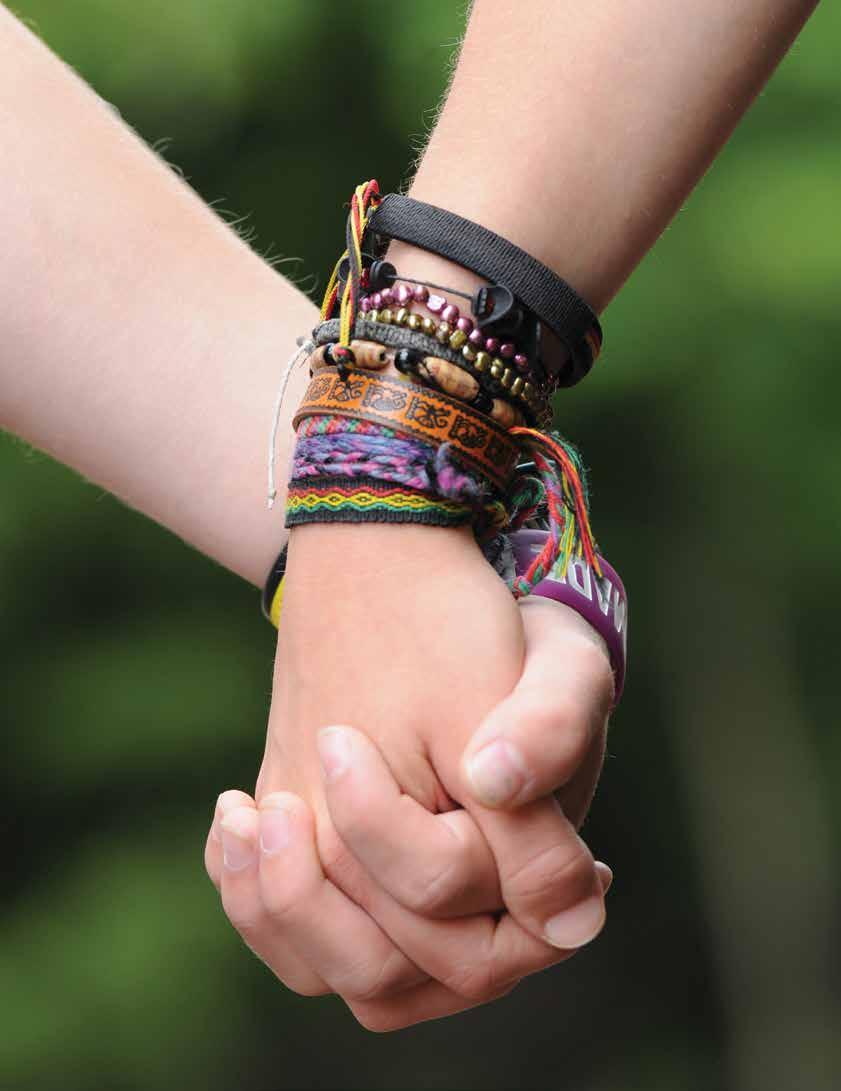
We asked law enforcement for their advice on Snapchat. Officer Gomez shared this information:
WHY SNAPCHAT?
1) Popular and most kids use it.
2) The filters on Snapchat are fun to use.
3) Automatically hides information from parents.
4) Has a secret pass-coded picture vault.
5) Automatically logs devices out when logged into on another device.
WHY NOT SNAPCHAT?
1) Parents can’t check kids’ phones for content incoming or outgoing.
2) Lots of inappropriate behaviors posted on Snapchat desensitize kids to reality. (Nude photos, drugs, parties, crimes, pornography, fights, pranks, challenges)
3) Parents can’t monitor or filter information being seen.
4) Parents can’t check who is talking to their children.
5) Parents have to blindly trust their young teens in a hazardous environment.

6) Snapchat can broadcast your child’s location within 10 feet.
7) Most predators highly recommend Snapchat to kids they are speaking with.
I strongly recommend 18 (previously 16) be a better age for Snapchat to be allowed on phones. I see terrible things at school come across Snapchat and parents have no way to see what that is. It is common for 75% of students in high school to have sent out naked pictures and most of those have been sent on Snapchat. I also see kids get completely addicted (8-15 hours per day) to time that is completely wasted and will not have return on time used.
WHY RISK THIS AS A PARENT?
1) I want to be the “cool parent.”
2) I’m tired of arguing with my kid about it.
3) I have no idea what Snapchat is.
4) All the other kids have it.
5) I trust my kid and nothing you say will change that.

6) My kid is different from other kids.

Did you know Snapchat has a built-in secret picture vault with its own password? Yup, most parents don’t know about this either. (See https://tinyurl.com/mr7n9p25 about how to find the secret vault which is called My Eyes Only). Did you know spambots now send unsolicited pornography indiscriminately to usernames on Snapchat? Parental phone checks are not going to uncover this Snapchat feature. Please put serious thought into letting your children have an application on their cell phones that hides information from you, the parent.
The number of thunderstorms per hour on the earth

The weight in ounces a human hair can support

The number of different facial expressions a dog can make
The number of hamburgers McDonald’s serves every second

1460
The number of dreams the average person has per year
The percentage of the world’s currency that is physical money (the rest exists only on computers)
18 March 2023 | YC MAGAZINE | youthconnectionscoalition.org
cannot guarantee all questions will be published; however, we will do our best to respond to all questions submitted.
HAVE A QUESTION? coleen@youthconnectionscoalition.org We
NUMBERS
76
3
100
75
8
relationship
GREEN FLAGS
NEW RELATIONSHIPS are exciting. There is so much to learn about each other. It can also be a tricky time as you figure out your compatibility.
Understanding and recognizing early warning signs can empower us to avoid abusive partners and help us enjoy healthier relationships.
Each of us is unique and every relationship is different. We also have different values and priorities. Ultimately, a relationship is healthy when both you and your partner feel you are equal, and the connection meets both of your needs.


“Green flags” highlight positive actions and traits in intimate partners and are usually promising signs someone understands healthy behaviors.
Here are some relationship green flags that will help you identify whether a new person is a worthwhile investment of your time, energy, and attention:
COMMUNICATION
TRUST
HONESTY RESPECT
EQUALITY
BOUNDARIES
CONSENT
EMPATHY
ACCOUNTABILITY
RELIABILITY
YOU ARE A PRIORITY
SELF-RESPONSIBILITY
VULNERABILITY
At The Friendship Center, we believe everyone has the right to flourish in healthy relationships free from violence and abuse. While none of us are perfect partners and no one can predict the future, green flags are encouraging indications someone has the capacity and skills necessary to participate in healthy relationships. Learn more at www.loveisrespect.org
LONG-STANDING FRIENDSHIPS
SELF SUFFICIENCY
SUPPORTS YOUR PERSONAL GROWTH
HONORS
BOUNDARIES
HEALTHY HOBBIES
EMPATHY
SELF-REFLECTIVE
SPIRITUALITY
COMMUNICATES
OPENLY
PRACTICES
SELF-CARE
Full article on green flags in relationships
The Friendship Center is available if you or someone you know is experiencing an abusive relationship. Reach out anytime at 406-442-6800 or contact us through our website thefriendshipcenter.org/contact

 1430 SANDERS, HELENA, MT 59601 / 24-HOUR HOTLINE: 406-442-6800 OFFICEM@THEFRIENDSHIPCENTER.ORG / WWW.THEFRIENDSHIPCENTER.ORG
1430 SANDERS, HELENA, MT 59601 / 24-HOUR HOTLINE: 406-442-6800 OFFICEM@THEFRIENDSHIPCENTER.ORG / WWW.THEFRIENDSHIPCENTER.ORG

THE VALUE OF
a well-balanced NO
By STEFFANI TURNER, LCSW
Well, it happened again last night ... and we both went to bed feeling terrible. I said NO! Again. For the umpteenth time. It seems like I say NO every day, all the time, in fact. One little, teeny word is so powerful.
Saying NO feels like it creates a rift in the relationship between you and your child, a rift that sometimes becomes an insurmountable mountain that you precariously traverse with a rock pick in hand. Along the way, you get harsh words, yelling, tantrum, pouting, “I hate you” and all the other heart-puncturing weapons thrown at you to dissuade. It almost makes you want to quit, back down, take another path, an easier one, one where your child is smiling and hugging you!
Why is that little word so important to all human wellbeing? Well, for a moment, lets imagine a world where we were never told NO. Those stop signs around town? They would be meaningless – just suggestions, really. Being told NO, gently, by our parents and teachers taught us to wait our turn.
Think of all the ways adults tolerate NO on a daily basis:
+ Doing a project for your boss when you don’t agree with the premise.
+ Fixing the lawnmower for your spouse when you would rather go fishing.
+ Stopping after only one cookie when your inner child is telling you to have another.
As parents, I think we struggle with NO for many reasons. We are tired. It’s a crazy-busy world. You may be exhausted, insecure in your parenting role or afraid of how your child will react, especially in a public place. (I swear Walmart is the best place to throw a tantrum.) We are afraid of how our children will feel about us, if they will be mad at us. We are afraid that it will stifle their creativity, they won’t be such free thinkers.
The reality is, learning NO is all a part of the human condition. It is a part of learning boundaries and limits, how far to go and how much to have. We are survivalists by biology. It is how we were engineered (or
we would probably have died out long ago). We take what we can get when we can get it. But we also learn societal rules, because you don’t want to be left out of the clan when the saber-tooth tigers are out hunting. We learned that by being together we can do more, but we have to have rules or we don’t accomplish anything. Weirdly, NO is good. NO makes we feel safe. NO makes our children feel like we love them and care about their wellbeing. NO is extremely important.
I had to say NO to my son again today, but I did it with a kind word and an understanding that he will be upset because he doesn’t like my NO. NO, a
well-balanced NO, is not a punishment. It is meant to teach a child frustration tolerance, disappointment, self-regulation. As adults, not only do we get told NO in some way a 100 times a day, we also have to tell ourselves NO. If not, we would spend all our money, not pay bills, eat to excess, make terrible decisions with our relationships. But mostly we have learned to self-regulate, which is the outcome of being told NO as a child. A good NO must be couched with a firmness (so the kid knows you won’t give in) and a kindness (so they know you are not just punishing them because you want to be mean). This helps them focus on what is important –what lesson we want them to learn with this NO.
One of my favorite examples of a good well-balanced NO is from a few years ago when my child was four. He went through a phase where, every day, about 15 minutes before dinner, he would ask for a cookie. I took it to heart and tried really hard not to do what I had experienced (a lot of yelling and screaming on my mom’s part to get out of the kitchen and leave her alone). It was hard! But I was able to use kindness, saying, “I’m sorry, honey. You cannot have a cookie. We are going to eat soon,” while still using firmness and standing by my NO. I worked hard not to waver, as he cried and pled, even threw a tantrum a time or two. But eventually, he no longer asked for a cookie and if he needed a snack he had a carrot stick instead. In this one instance, I could really connect to why my son was hating NO so much – who doesn’t want a cookie pretty much anytime?
All of this aside, what I want most for my children is that they will grow up kind and caring people. This is real success. Hearing NO is just one step in that direction. Look for opportunities to tell your children NO in a safe and caring manner, where the price tag is low and where you are there to help them learn frustration tolerance and selfregulation. Be ok that they get upset at the NO, help them with that feeling. Practice having kindness and firmness – it’s not an easy combination! It’s hard for us all. Go out there and love your kids with a big wellintentioned NO! ■
youthconnectionscoalition.org | YC MAGAZINE | March 2023 21
NO, a well-balanced NO, is not a punishment. It is meant to teach a child frustration tolerance, disappointment, self-regulation.
As adults, not only do we get told NO in some way a 100 times a day, we also have to tell ourselves NO. If not, we would spend all our money, not pay bills, eat to excess, make terrible decisions with our relationships.




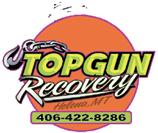

22 March 2023 | YC MAGAZINE | youthconnectionscoalition.org You Decide! $60K in student debt or $60K in your pocket? Consider a career in construction! Learn more at: buildmontana.org • HEAVY DUTY TOWING • MEDIUM TOWING • LIGHT DUTY TOWING • LONG DISTANCE RECOVERY • TRAILER TOWING • RV TOWING Top Gun Recovery is a proven and trusted towing service, outfitted with the most up-to-date equipment in the Helena Valley. • HORSE TRAILER TOWING • FLATBED, LIFTS & DOLLIES • FUEL DELIVERY • TIRE REPAIR • JUMP STARTS • LOCKOUTS TopGunRecovery.com 2809 York Road, Helena MT 59602
BATH SALTS: not what it sounds like
By GAVIN WISDOM, ACLC, PMH-C
Did you know that “bath salts” is just a street name for synthetic cathinones? Bathing products (like Epsom salts) are often natural in origin and have no mind-altering effects, whereas synthetic cathinones are manufactured by humans in a lab.

Often sold as either “bath salts,” “plant fertilizer,” or “vanilla sky,” synthetic cathinones are packaged as a white or brown crystalline powder. The drug is a stimulant, marketed as a substitute for cocaine and/or amphetamines. Most commonly smoked, synthetic cathinones can also be swallowed, snorted, or injected.
While no doubt dangerous, these products are available legally, and legislative attempts to control synthetic cathinones have been particularly challenging. Synthetic cathinones are available online, at cannabis paraphernalia stores (aka “head” shops), and sometimes at convenience stores and truck stops, and are sold with varying names such as “Red Dove,” “Cloud 9,” “Ocean Snow,” and so-on. They often state that they are “not for human consumption”
on the packaging, which is sold in 200-mg and 500-mg sizes. Chemically similar to other stimulants like amphetamines, cocaine, and MDMA (aka “Molly”), synthetic cathinones share similar dangers, such as potential for addiction, increased heart rate, chest pain, breakdown of skeletal muscle tissue, kidney failure, and in some cases, death. Short-term effects include very severe paranoia that can sometimes cause people to harm themselves or others. Signs of use include suicidal thoughts, agitation, combative or violent behavior, confusion, hallucinations, and psychosis.
The best way to know if your children are using synthetic cathinones is through having a strong relationship based in trust, in which you can talk to them about their substance use. On the foundation of a loving relationship, if your child is struggling with an addiction of any sort, they will know that they can come to you as a safe resource who will help them access the professional help they may need. ■
youthconnectionscoalition.org | YC MAGAZINE | March 2023 23
Information in this article was sourced from the National Institute of Health, as well as from the professional clinical opinion of the author.






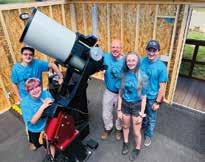
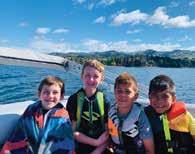

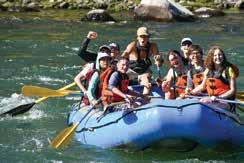

24 March 2023 | YC MAGAZINE | youthconnectionscoalition.org FREE C ith a $ t vis ched! Enjoy a treat on us! Sale prices valid March 16 - April 18, 2023 While supplies last. One coupon per customer. Receive chocolate bar coupon with purchase of a sale item listed on Spring Fever mailer. Point S J&J Tire 1250 Prospect Ave Helena, MT (406) 443-1062 Point S Capital City Tire 715 Last Chance Gulch Helena, MT (406) 442-9300 Point S Jerry Noble 1420 10th Ave North Great Falls, MT (406) 268-0600 Fox's Point S 401 1st Ave South Great Falls, MT (406) 315-8144 Save $10 10% OFF Windshield Wipers Oil Change W 15K Valvoline Kit Expires 4/18/2023 Expires 4/18/2023 Expires 4/18/2023 E Spring Fever Sale Spring is just around the corner! Don't miss out on our Buy 3 Get 1 FREE sale March 16 - April 18, 2023! The sale features these 4 amazing tire options which are guaranteed to get you where you need to go on all your upcoming adventures!
Find out more about our program at mo ntanalearning.o rg Montana’s Premier Science Camp for Kids Summer Camps
Falken Wildpeak R/T Falken Wildpeak AT Trail Kumho TA51 Kumho AT52
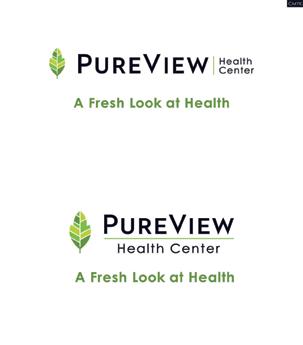

Less time in line. More time out here. Nobody wants to wait in line for a prescription. At PureView, we offer low-cost prescriptions and free home delivery. So families can spend less time waiting in line, and more time together doing what they love. 406.457.0000 Switching to PureView is easy! Medical Dental Behavorial Health Pharmacy pureviewhealthcenter.org
In Montana, parents want what’s best for their kids.
In Montana, parents want what’s best for their kids.
In Montana, parents want what’s best for their kids.

ParentingMontana.org has information and tools for parents of children at every age.
ParentingMontana.org has information and tools for parents of children at every age.
ParentingMontana.org has information and tools for parents of children at every age.
TOOLS FOR YOUR CHILD’S SUCCESS
TOOLS FOR YOUR CHILD’S SUCCESS
TOOLS FOR YOUR CHILD’S SUCCESS
Youth Connections 1025 N Rodney Helena, MT 59601
This product was supported [in part] by CFDA 93.959 from the Substance Abuse and Mental Health Services Administration (SAMHSA). The content of this publication does not necessarily reflect the views or policies of SAMHSA or Health and Human Services.
This product was supported [in part] by CFDA 93.959 from the Substance Abuse and Mental Health Services Administration (SAMHSA). The content of this publication does not necessarily reflect the views or policies of SAMHSA or Health and Human Services.
This product was supported [in part] by CFDA 93.959 from the Substance Abuse and Mental Health Services Administration (SAMHSA). The content of this publication does not necessarily reflect the views or policies of SAMHSA or Health and Human Services.
























































 1430 SANDERS, HELENA, MT 59601 / 24-HOUR HOTLINE: 406-442-6800 OFFICEM@THEFRIENDSHIPCENTER.ORG / WWW.THEFRIENDSHIPCENTER.ORG
1430 SANDERS, HELENA, MT 59601 / 24-HOUR HOTLINE: 406-442-6800 OFFICEM@THEFRIENDSHIPCENTER.ORG / WWW.THEFRIENDSHIPCENTER.ORG





















